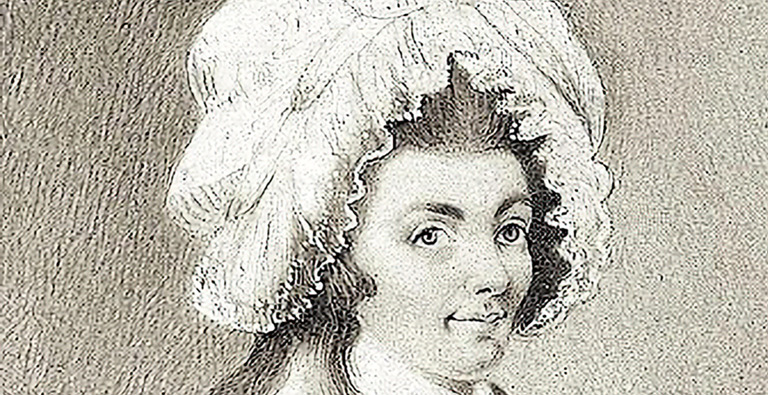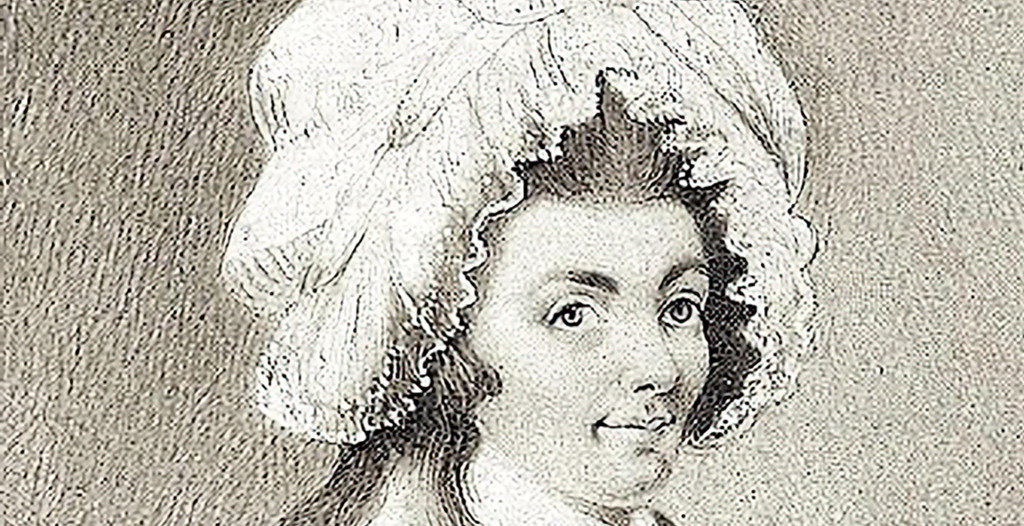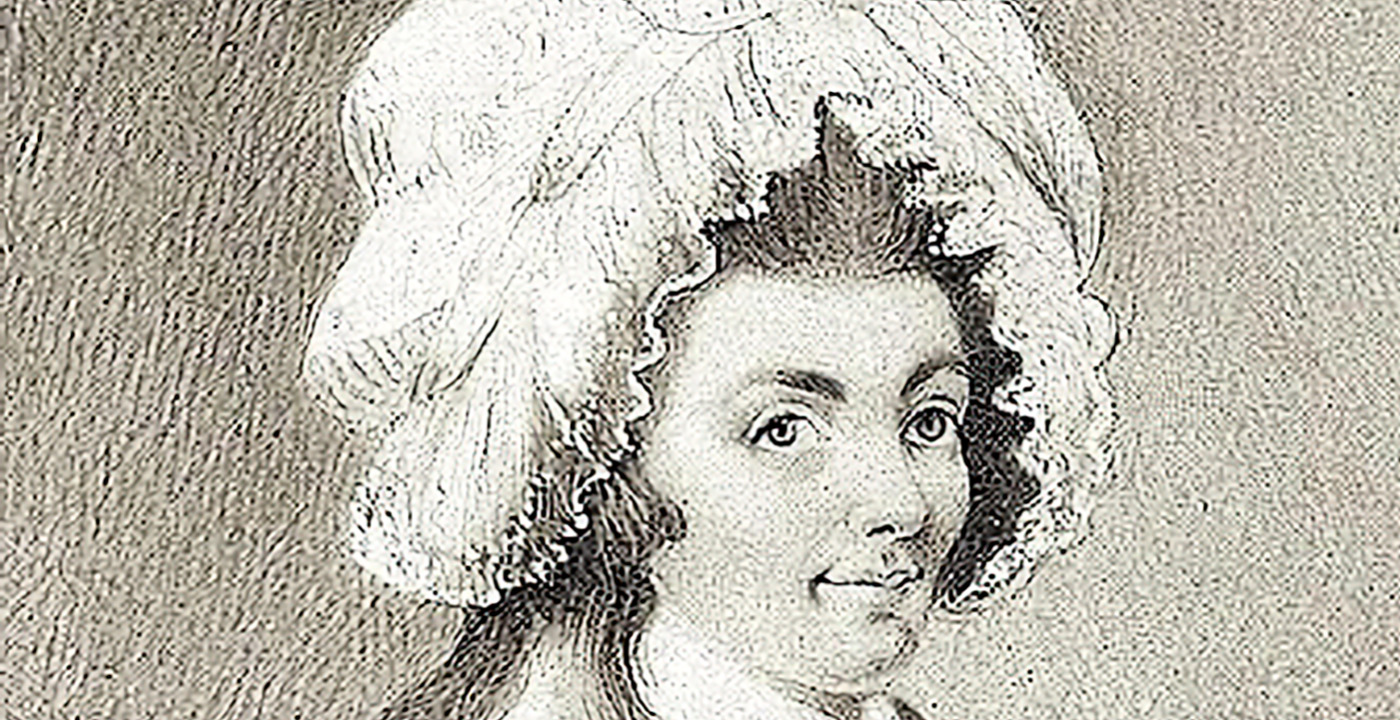Birth
Christened 9 July 1751, The Old Meeting (Presbyterian), South Petherton, Somerset.
Education
Boarding SchoolDeath
Buried 10 June 1793, Bristol, Somerset
Religion
Unitarian, ArianismMary Scott was an 18th century feminist writer and poet. She is the author of The Female Advocate and Messiah; both are radical works in regards to early feminist ideals and heterodox religious opinions, and they are sufficient to earn her a place among women writers in the last half of the 18th century. The former establishes her as a forerunner of Elizabeth Benger, Mary Hays, and other women who celebrated, either in poetry or prose, the lives and writings of women throughout British and world history. Her manuscript and published poems and correspondence in the Steele Collection and in Isabella Scott’s Family Biography establish Scott as a woman whose life and career deserves closer attention.
Personal Information
Name(s)
Mary Scott [later Taylor]
Date and place of birth
Milborne Port, Somerset; christened 9 July 1751, The Old Meeting (Presbyterian), South Petherton, Somerset.
Death and place of death
Buried 10 June 1793, Bristol, Somerset; obituary dated 4 June 1793 from Bristol (Gentleman’s Magazine 63 [1793], 579).
Family
Mother: Mary Russell Scott (d. 1787), formerly of Bradford Abbas, near Sherborne, Dorset.
Father: John Scott (1721-74), linen-weaver, and prominent member of the Independent meeting in Milborne Port. His mother, Hannah Sprint Scott (1681–1767), was the daughter of John Sprint (d. 1718), the first Dissenting minister at Milborne Port. John Scott signed the original church covenant on 22 April 1744. Eventually, Mary Scott (5 September 1779) joined the church as well.
Siblings: Samuel Scott (b. 1750) – a woolen manufacturer at Sherborne whose son, Robert, married his cousin, Mary Ann Taylor, Mary Scott’s daughter.
Russell Scott (1760-1834) – studied for the ministry at Daventry, Homerton, and Hoxton Academy in London; studied medicine under Dr. William Hawes, founder of the Humane Society and Scott’s future father-in-law; served as minister at High Street Chapel, Portsmouth (Unitarian), 1788-1834.
Marriage and Family Life
In May 1777 Mary Scott became engaged to John Taylor (1752-1827), a tutor at Daventry Academy who met Scott during one of her visits to the school to see her brother Russell, who studied there c. 1775-76. Taylor pursued her relentlessly throughout the next year before achieving an engagement. They did not marry until May 1788, about six months after the death of Mrs. Scott. Both Taylor and Scott had become Unitarians by that date. Their long courtship, however, left Mary Scott with fears and doubts, many of which were realized in her brief marriage. They settled at Ilminster, where Taylor served for a time as minister of the Presbyterian congregation before resigning to become a Quaker school teacher, a move that reduced his wife and two young children to near poverty. In January 1793 John Taylor removed to Bristol to teach in a Quaker school; Mary Scott Taylor died there in June 1793.
Children:
John Edward Taylor (1791–1844), born at Ilminster on 11 September 1791; in 1821 became the founding editor of the Manchester Guardian; three years later married his cousin Sophia Russell Scott of Portsmouth.
Mary Ann Taylor (1789–1875), born in Milborne Port, married her cousin Robert Scott of Bath in 1821 and resided there until her death in 1875.
Education
Scott, like her friend Mary Steele, probably attended a boarding school in London in the mid-1760s. Her comments on female education in the dedicatory epistle to The Female Advocate and in some letters suggest a first hand knowledge of such schools.
Religion
Scott attended the Independent meeting in Milborne Port during the ministry of Francis Newton. By the early 1780s she had adopted Arianism and within a few years had become a committed Unitarian. Her mother, however, remained an orthodox Calvinist, spending her later years at odds with Mary and her brother Russell. Scott’s Messiah: A Poem (1788), like her Female Advocate, was published by the Unitarian Joseph Johnson and dedicated to her spiritual mentor, Theophilus Lindsey (1723–1808), a London Unitarian minister. While in Bristol in 1793, she attended the Unitarian chapel in Lewin’s Mead led by the Rev. John Prior Estlin, the same minister who in 1815 welcomed Mary Hays into his congregation.
Transformation(s)
Mary Scott’s most significant transformation mirrors that of Mary Hays, in that both women were raised as orthodox Calvinists but became Unitarians by their early 30s. Scott’s Messiah was written to promote Arian/Unitarian attitudes toward the person and work of Christ. Another transformation occurred with the publication of The Female Advocate (1774) in which her use of short friendship and occasional poems composed by “Myra,” her nom de plume within the Steele Circle, developed into a wide-ranging depiction of feminist ideals in The Female Advocate (1774), a poem addressed to the general public (dedicated to Mary Steele) but now under her real name. With the publication of The Female Advocate, Mary Scott emerged from the private, insulated world of a West Country scribal coterie into London’s formal publishing world, her legacy marked thereafter by her forward-looking opinions concerning women’s educational, intellectual, social, and political equality.
Contemporaneous Network(s)
Mary Scott (“Mira,” “Myra”) and her closest friend Mary Steele (“Silvia,” “Sylvia”) were central figures in the second generation of the Steele Circle emanating from Broughton and the poet and famed hymn writer Anne Steele (“Theodosia”). Two significant Bluestockings – Hannah More (1745-1833) and Anna Seward (1747-1809) – were situated along the fringes of the circle, with Seward corresponding with Scott for several years.
Feminist/Activism
Steele’s Danebury and Scott’s Female Advocate were designed to explore two important feminist ideals – private friendships and intellectual accomplishments. As Moira Ferguson notes, The Female Advocate “establishes Mary Scott as the first woman to feature a historical lineage of accomplished women poets and prose writers who are a credit to England . . . [and] silently constitutes herself as a member of that community” (“The Cause of her Sex” 38). By the late 1770s they were also writing about women’s education and a woman’s right to self-determination in pursuing and choosing her marriage partner or remaining unmarried.
less
Significance
Works/Agency
Scott, Mary. The Female Advocate. London: Joseph Johnson, 1774; 1775.
—. “To Miss Aikin, on Reading her Poems.” Gentleman’s Magazine 44 (July 1774), 327.
—. “Verses Addressed to Miss Seward, on the Publication of her Monody on Major André.” Gentleman’s Magazine 53 (June 1783), 519-20.
—. Messiah: a Poem, in Two Parts. Published for the Benefit of the General Hospital at Bath, by Miss Scott, author of The Female Advocate. Bath: Printed by R. Cruttwell, Bath; and sold in London by J. Johnson, 1788.
—. “Memorial to Jonas Hanway, Philanthropist.” Gentleman’s Magazine 61 (February 1787), 104.
—. “Where’er the Lord shall build my house.” Hymn 659. A Collection of Hymns and Psalms, for Public and Private Worship, ed. Andrew Kippis, Abraham Rees, Thomas Jervis, and Thomas Morgan. 4th ed. London: Longman, Hurst, Rees, and Orme, 1807. 472.
For texts of Scott’s published and unpublished poems, as well as her correspondence, see Timothy Whelan, ed., Nonconformist Women Writers, 1720-1840, 8 vols (London: Pickering & Chatto, 2011), 3:206, 235-37, 314-16; and 4:1-106, 259-309.
Contemporaneous Identifications
References to Scott can be found in the following works:
A Catalogue of Five Hundred Celebrated Authors of Great Britain, Now Living. London: R. Faulder, J. Sewel, and B. Law, 1788.
A Collection of Hymns and Psalms, for Public and Private Worship, ed. Andrew Kippis, Abraham Rees, Thomas Jervis, and Thomas Morgan, 2nd ed. London: G. G. and J. Robinson, and J. Johnson, 1797; 4th ed. London: Longman, Hurst, Rees, and Orme, 1807.
Constable, Archibald, ed. The Letters of Anna Seward. Edinburgh: George Ramsey and Co, 1811.
“Memoir of Mr. John Edward Taylor.” Christian Reformer 11 (1844): 153-78.
Poetry and correspondence of Mary Steele, 1766-1811.
Reputation
Though The Female Advocate (1774) and Messiah (1788) have received attention from 20th century feminists and literary scholars, 18th century responses to the poems were mixed at best. By 1788 the editors of A Catalogue of Five Hundred Celebrated Authors of Great Britain, Now Living referred to Scott as the “Author of a performance entitled the Female Advocate, which has had between two and three admirers” (n.p.). By 1844, her poems were largely forgotten. The writer of the “Memoir” on J. E. Taylor in 1844 downplayed the importance and relevance of the women who appeared in The Female Advocate. Isabella Scott had little regard for her ancestor’s literary accomplishments, an opinion shared by the Unitarian scholar Herbert McLachlan who, after viewing the manuscript materials by Mary Scott in Isabella Scott’s possession, believed the poet to be one of many women who composed poetry at a time when “versifying was as common as taking snuff” (Essays and Addresses 76). By contrast, Moira Ferguson contends that The Female Advocate “stamps Mary Scott as a cultural historian who helps to redefine the nation along gendered lines from a progressive Protestant perspective” and that her Messiah “reconfigures this gendered commitment into a frontal attack on Roman imperial predation and religious superstition” (“Mary Scott” 42).
Legacy and Influence
Scott’s Female Advocate and Messiah, both radical works in regards to early feminist ideals and heterodox religious opinions, are sufficient to earn her a place among women writers in the last half of the 18th century. The former establishes her as a forerunner of Elizabeth Benger, Mary Hays, and other women who celebrated, either in poetry or prose, the lives and writings of women throughout British and world history. Her manuscript and published poems and correspondence in the Steele Collection and in Isabella Scott’s Family Biography establish Scott as a woman whose life and career deserves closer attention, especially the intimate friendships she enjoyed with Mary Steele and other members of the Steele Circle, her epistolary friendship with the Bluestocking Anna Seward, and her friendships with such Unitarian figures as the bookseller Joseph Johnson, the medical scholar Richard Pulteney, and two ministers, Theophilus Lindsey and John Prior Estlin of Bristol.
less
Controversies
Controversy
The overt feminism of The Female Advocate concerned male reviewers in 1774 who found Scott’s historical accounting of women’s education, intellectual development, and engagement in the public sphere too progressive for their tastes. Similar criticism was directed at her 1788 poem Messiah, only now aimed at her heterodoxy, not her feminism, although some critics were surprised that a woman writer would attempt such a poem in the first place. In both cases, the weight of public opinion would eventually fall against her and by 1840 she was virtually unknown, a common occurrence for women writers of the late 18th century who espoused radical views concerning women’s rights.
New and unfolding information and/or interpretations
The Mary Steele-Mary Scott correspondence and the Scott poems in the Steele Collection, Angus Library, Oxford, along with her correspondence published in Isabella Scott’s A Family Biography reveal substantial new information about Scott’s place within the Steele Circle, her long engagement and troubled marriage, and her intimate friendship with Mary Steele.
less
Bibliography
Sources
A Catalogue of Five Hundred Celebrated Authors of Great Britain, Now Living. London: R. Faulder, J. Sewel, and B. Law, 1788.
Constable, Archibald, ed. The Letters of Anna Seward. Edinburgh: George Ramsey and Co, 1811.
Ferguson, Moira. Eighteenth-Century Women Poets: Nation, Class, and Gender. Albany: State University of New York Press, 1995.
—. “‘The Cause of My Sex’: Mary Scott and the Female Literary Tradition.” Huntington Library Quarterly 50 (1987): 359-77.
Holladay, Gae, ed. The Female Advocate; A Poem. Occasioned by Reading Mr. Duncombe’s Feminead (1774). Augustan Reprint Society Publication Number 224, Los Angeles: William Andrews Clark Memorial Library, University of California, 1984.
McLachlan, Herbert. Essays and Addresses. Manchester: Manchester University Press, 1950.
—. “The Taylors and Scotts of the ‘Manchester Guardian.’’’ Transactions of the Unitarian Historical Society 4 (1927-30), 24-34.
“Memoir of Mr. John Edward Taylor.” Christian Reformer 11 (1844): 153-78.
Reeves, Marjorie. “Literary Women in Eighteenth-Century Nonconformist Circles.” Culture and the Nonconformist Tradition, ed. Alan Kreider and Jane Shaw. Cardiff: U of Wales Press, 1999. 7-24.
—. Pursuing the Muses: Female Education and Nonconformist Culture 1700-1900. London: Leicester UP, 1997.
Scott, Isabella, and Catherine Scott, ed. A Family Biography A Family Biography 1662 to 1908. London: James Nesbet & Co., 1908.
Whelan, Timothy. “Mary Scott (1751-93).” In Other British Voices: Women, Poetry, and Religion, 1766-1840, ed. Timothy Whelan. New York: Palgrave Macmillan, 2015. 87-126.
—. “Mary Scott, Sarah Froud, and the Steele Literary Circle: A Revealing Annotation to The Female Advocate.” Huntington Library Quarterly 77.4 (2015): 435-52.
—. “West Country Nonconformist Women Writers, 1720-1840,” Wordsworth Circle 43 (2012): 44-55.
—. “When kindred Souls unite”: The Literary Friendship of Mary Steele and Mary Scott, 1766-1793.” Journal of Women’s Studies 43 (2014): 619-40.
—, ed. The Poetry and Correspondence of Mary Scott and other Women Writers of the Steele Circle. Vol. 4 of Nonconformist Women Writers, 1720-1840, gen. ed. Timothy Whelan. 8 vols. London: Pickering & Chatto, 2011.
Archival resources (selected):
Three poems by Mary Scott addressed to Mary Steele, six friendship poems by Steele addressed to Scott, three letters by Steele to Scott, and two poems by William Steele to Scott can be found in the Steele Collection, STE 4/1, 5/2, 5/4, and 5/14, Angus Library, Regent’s Park College, Oxford.
Mary Scott to Dr Richard Pulteney, 23 April 1788, Pulteney Papers, Linnean Society, London.
Anna Seward’s letters to Scott (copies), Seward’s Letter Books (microfiche, British Library, RP 4112); nine of the ten letters were published in Archibald Constable’s The Letters of Anna Seward (1811).
Two letters from Theophilus Lindsey to Mary Scott, Scott Collection, London (private collection).
Web resources (selected):
“Mary Scott.” Nonconformist Women Writers, 1650-1850. https://sites.google.com/view/nonconformist-women-writers/nonconformist-women-writers-1650-1850
Mullan, John. “Scott, Mary (1751/2–1793).” Oxford Dictionary of National Biography, Oxford University Press, 2004.
Issues with the sources
The publications on Mary Scott by Whelan (2011-15) have corrected numerous inaccuracies in previous biographical accounts of Scott by uncovering new information about her role within the Steele Circle and some previously unknown letters and poems residing in the Steele Collection, Angus Library, Oxford, and the Linnean Society Library, London, and in A Family Biography by Isabella and Catherine Scott.




Comment
Your message was sent successfully